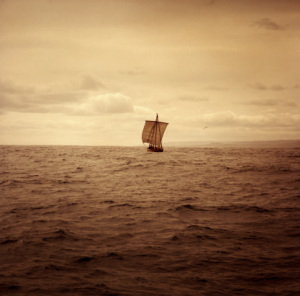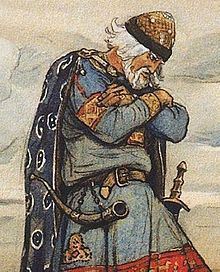Three Vikings Who Were More Interesting (and Notorious) Than Ragnar Lothbrok
Ragnar is a character from legend. There is no telling whether he was real or a fable. His recent ascension to fame in popular culture is without a doubt a good thing for Norse studies, but now it is time to take a look at those Vikings who we know for sure were real people and whose lives were in fact more remarkable than the legendary King of the History Channel.
1.Hastein
Supposed son of Ragnar Lothbrok—although he likely claimed this for prestige, similar to how the nobility in France all claimed lineage to Charlemagne—Hastein lived a life envied by his contemporaries. He began his journey as a relatively unknown warrior who appears in a few mentions beginning in the mid-9th century. His claim to fame was his voyage to the Mediterranean with his brother Bjorn Ironside, and together they sacked Cordoba on their way to the Mediterranean basin. Their fortunes were not consistent, however, and the islamic states of North Africa quickly mounted resistance to them. Most notoriously, Hastein helped to sack the city of Luna, which at the time they believed was Rome. They tricked the local clergy into believing that their leader had died of pestilence moments after converting to Christianity. The local clergy took pity on him and allowed the Northmen to enter the city to conduct a Christian burial. During the ceremony, Hastein sprang to life, murdered the bishop, and with his men sacked the city.
Hastein returned to his base on the French coast, an island now known as Noirmoutier, without most of his fleet which had been ambushed by the Moors at Gibraltar. Nevertheless, Hastein made a solid career out of raiding the Frankish Empire and earned the hearty reputation as The Scourge of the Somme and Loire.
Primary Source authors and documents which attest to Hastein’s life and notoriety:
Dudo of Saint Quentin
William of Jumièges
Annals of St-Bertin
Chronicle of Regino de Prüm
The Anglo-Saxon Chronicle
2. Leif Eriksson
Born to a father exiled from Iceland for being too violent, Leif undoubtedly lived a difficult childhood. The North Atlantic made for arduous subsistence, even for the Vikings. Due to his father’s reputation, he lived as an exile himself for the most part and did not attempt to make any significant return to Norway. Instead, he became an explorer, one of the most remembered to this day. Based on a rumor, he took ships across the seas in hopes of finding new fertile lands for his people. The rest is all very well known history.
Leif’s legacy helped to shape our view of the Vikings. He helped us to think of them as explorers rather than killers, as adventurers rather than rapists. Most importantly, he planted a seed in the consciousness of Europe, one which reignited in the 15th century and led Europe to global hegemony.
Primary source authors and documents which attest to Leif’s life:
Saga of Erik the Red
The Saga of the Greenlanders
3. Oleg of Novgorod
When discussing the Vikings, the Rus are often forgotten. It seems popular culture has had little trouble romanticizing the Norwegians and Danes who sailed West, but has classically held little interest in those who sailed East. But one of the most influential men of the early medieval period lived there, and his legacy lasted well into the modern era. Oleg began as a regent of the throne of Novgorod whose duty it was to oversee the training of the next monarch, Igor, son of Rurik of Novgorod (yet another fascinating character). During his reign, Oleg consolidated power among the the cities situated along the Dnieper river and eventually conquered the city of Kiev, which he then made his capital. Kiev was of strategic value as it was well placed to launch raids on Constantinople. Following several successful missions, the gentry of the city caved and struck a very favorable trade agreement with Kiev. This trade agreement helped to enrich the city under Oleg, and thrust the polities of Kiev and Novgorod into positions of power. Thus began the early history of the country we know today as Russia.
These are but three among a multitude of historical figures from Scandinavia who helped to shape the early political landscape of Europe, and who are, from a historical perspective, far more interesting than Ragnar Lothbrok.
Primary source authors and documents which attest to Oleg’s life:
The Russian Primary Chronicle
The Novgorod First Chronicle
The Kiev Chronicle (which really only deals with his death and burial)
Don’t forget, I wrote a couple of books. Feel free to buy one :)








